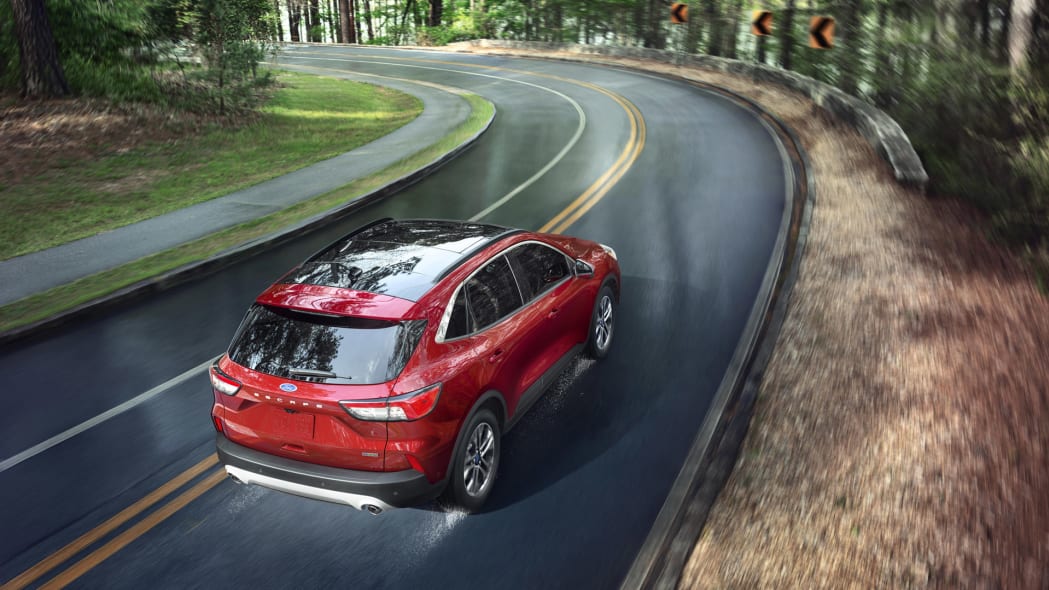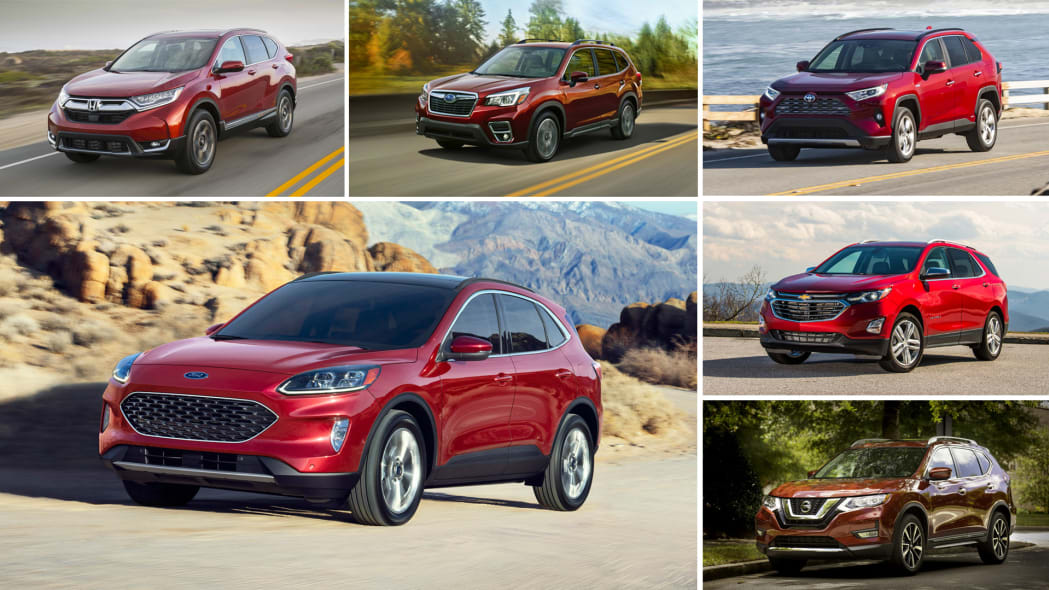Audi Repair Shop Doylestown
Call 267 279 9477 to schedule a appointment
The new 2020 Ford Escape takes a huge step forward in the competitive compact crossover market with a new platform, styling and powertrains. It’s now being built on Ford’s new modular architecture, and is the first vehicle riding on it to come to the United States. Despite being slightly bigger than the Escape it replaces, the 2020 model drives more like a car than ever before, reminding us — in a good way — of a Ford Focus with increased ground clearance. Indeed, while it provides the elevated feel and seating position of a crossover its driving dynamics are a bit more plucky and entertaining than many other similarly sized utes.
At the same time, the 2020 Escape offers more passenger space, improved comfort and extra technology (including standard safety tech), allowing it to better align with top competitors. It’s also more efficient, especially the Escape Hybrid, which returns to the line-up after taking a generation off. In general, it’s well worth a test drive.
What’s new for 2020?
The Escape went through a clean-sheet redesign for 2020. Its purpose as a compact crossover has not changed, but Ford decided to shake things up from a styling and powertrain perspective. All the dimensions are more favorable for utility and driving dynamics — it’s longer, lower and wider — but Ford still wanted to keep the light off-roading ruggedness intact.
An Escape Hybrid is once again available, but it’ll joined next year by a plug-in hybrid as well. Ford is targeting about 30 miles of pure electric range with the plug-in. The other two turbocharged gas-only engine options carryover with updates for 2020.
What’s the Escape’s interior and in-car technology like?
Ford revamped the Escape’s interior for this 2020 redesign, and it strongly resembles the all-new Ford Focus sold in other global markets (the two share a common platform). It has some fancy and eye-catching optional technology to help set it apart from its competitors. We like the available 12.3-inch digital instrument cluster, in part because it offers more than just a replication of traditional gauges and dials. The cluster is configurable, and it offers a different visual representation for each available drive mode — Normal, Sport, Eco, Slippery, and Snow and Sand. There’s also an available 6-inch head-up display that unfolds from the top of the dashboard to put relevant information directly in the driver’s line of sight.
Still, we have some complaints about the new Escape’s interior detailing. Most everything the driver will regularly come into contact with is of reasonable and competitive quality, but between those touch points are some iffy bits. Particularly annoying are the door panels molded out of a sort of squishy foam-like plastic, and rigid sun visors that impede too much of the view forward when in use.
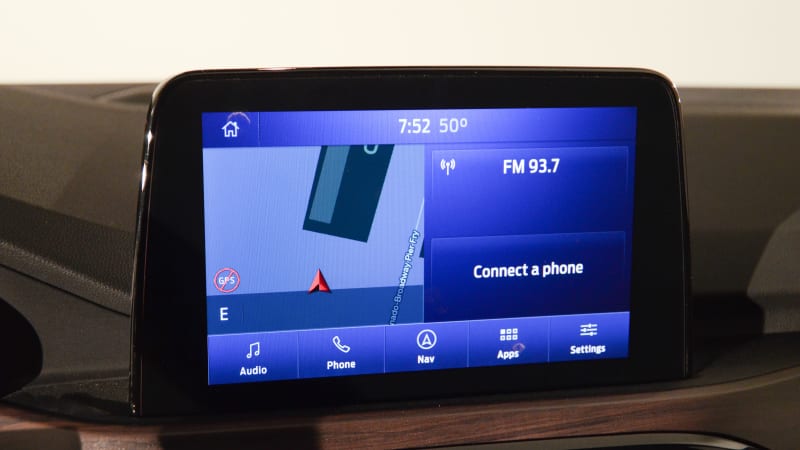
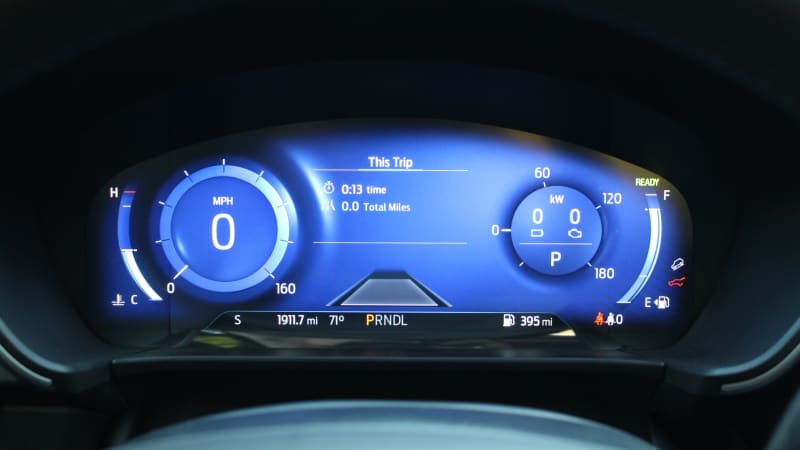


How big is the new Escape?
The 2020 Escape has gotten bigger, measuring 180.5 inches in total length. This slots it right in the middle of its competition in terms of all-out size, but the Escape has a few tricks to maximize interior space.
The 2020 Escape is roomy inside, particularly in the back seat. The second row now slides 6 inches fore and aft, and in its rearmost position, offers a class-leading 40.7 inches of legroom. In the real world, that means a 6-footer will have no problem getting comfortable in the back seat behind another 6-footer in the front. If you position those rear seats as far forward as they’ll go, thereby significantly reducing rear legroom, there’s as much as 33.5 cubic-feet behind them. That’s less than the outgoing Escape’s 34 cubic-feet, which was available with the seat in its fixed and therefore rearmost position. A Honda CR-V and Subaru Forester also have more with their fixed seats raised as well as lowered. The new Escape’s maximum cargo space is 65.4 cubic-feet, which is average for the segment, but about 10 cubes shy of the Honda and Subaru. The outgoing Escape’s maximum is 68 cubic-feet. At least the 2020 Escape’s cargo area is well-shaped and accessible — we saw Ford put four full sets of golf clubs and bags in the back of an Escape, and there was room for more.
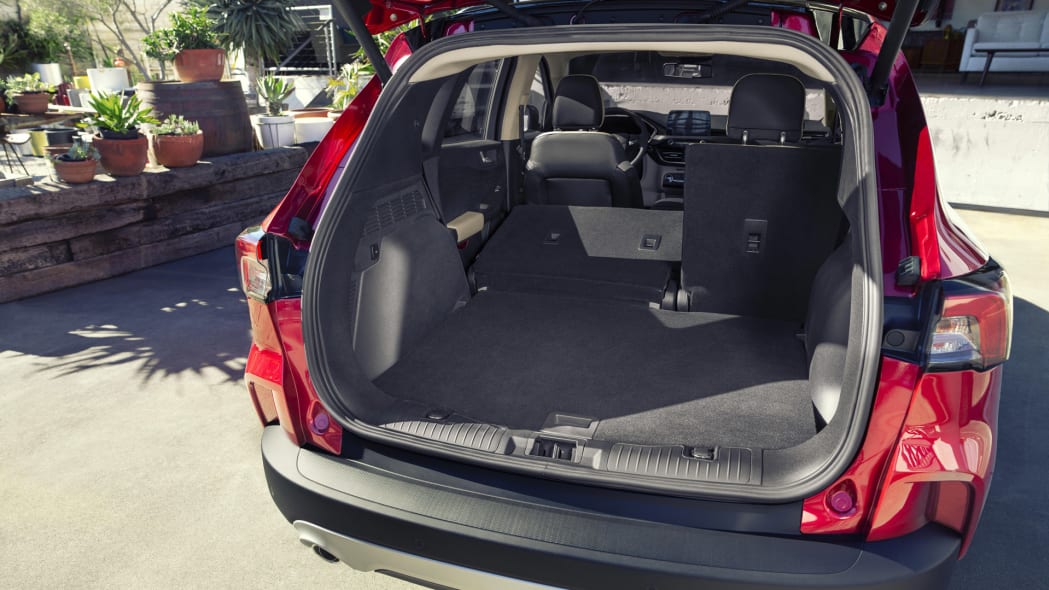
What’s the Escape’s performance and fuel economy?
Ford offers the 2020 Escape with three powertrain choices. The base engine is a 1.5-liter turbocharged three-cylinder that makes 180 horsepower and 177 pound-feet of torque. Yes, only three cylinders, and there’s cylinder deactivation, so it can actually operate as a two-cylinder. The EPA rates this engine at 27 city, 33 highway, and 30 combined with standard front-wheel drive or 26/31/28 with optional all-wheel drive.
Exclusive to the Titanium trim level is a 2.0-liter turbo four-cylinder that increases max output to 250 horsepower and 275 pound-feet of torque on 93 octane fuel, providing for a 0-60 mph time of 7.4 seconds. All-wheel-drive is standard with this engine and fuel economy stands at 23/31/26.
Then there is the hybrid powertrain that uses a 2.5-liter four-cylinder running on the more efficient Atkinson cycle to supplement the electric power. The normal 2020 Ford Escape Hybrid produces 198 horsepower and 153 pound-feet of torque. While we didn’t have EPA ratings for the Hybrid at the time of this writing, we saw an all-wheel-drive model’s trip computer record 43.5 mpg over a 37-mile, one hour commute on both highway and city streets, with 15.6 miles driven under electric power.
The Escape Plug-In, coming next year, raises that to 209 horsepower and the same amount of torque. Ford claims the Escape Plug-In will go about 30 miles on a full charge, but EPA-estimated range and fuel economy are not available yet.
What’s the new Escape like to drive?
Despite being bigger than the outgoing model, the new Escape is more carlike to drive. It now feels even more like a Ford Focus that has been lifted off the ground. Its chassis is stiff and the suspension is just on the firm side of comfortable (much as the outgoing Escape’s was), making it one of the more engaging options in its segment. As is the case with most modern compact crossovers, the Escape’s steering is overboosted and light, but not egregiously so.
The base 1.5-liter turbocharged three-cylinder engine is paired to a traditional eight-speed automatic transmission. While a little sluggish off the line, it comes to life as the turbo builds pressure. It feels smooth and responsive switching through the gears, and we’re glad Ford avoided putting a continuously variable transmission in here. The more powerful 2.0-liter turbo-four is certainly quicker, but it, too, can feel a little slow off the line. Once under way, passing power from the 2.0-liter is very good due to its abundance of midrange torque, and it’s rated to tow as much as 3,500 pounds.
Despite having less torque than the gas-only powertrains, the Escape Hybrid’s torque comes early, helping it get moving quickly at low rpm. Its CVT can drone a bit, especially under steady acceleration, but it’s not bothersome under most driving. Like other 2020 Escapes, the hybrid’s chassis feels stiff, which helps contribute to a comfortably firm ride and playful handling characteristics. The steering is reasonably quick though devoid of much feedback, which is pretty much par for the compact crossover course.
What more can I read about the Ford Escape?
A first drive review of the 2020 Ford Escape, with driving impressions, specs and photos.
Our first go behind the wheel of the Hybrid, which we found to be “no fun-sapping miserly version aimed solely at those trying to save a buck at the pump.”
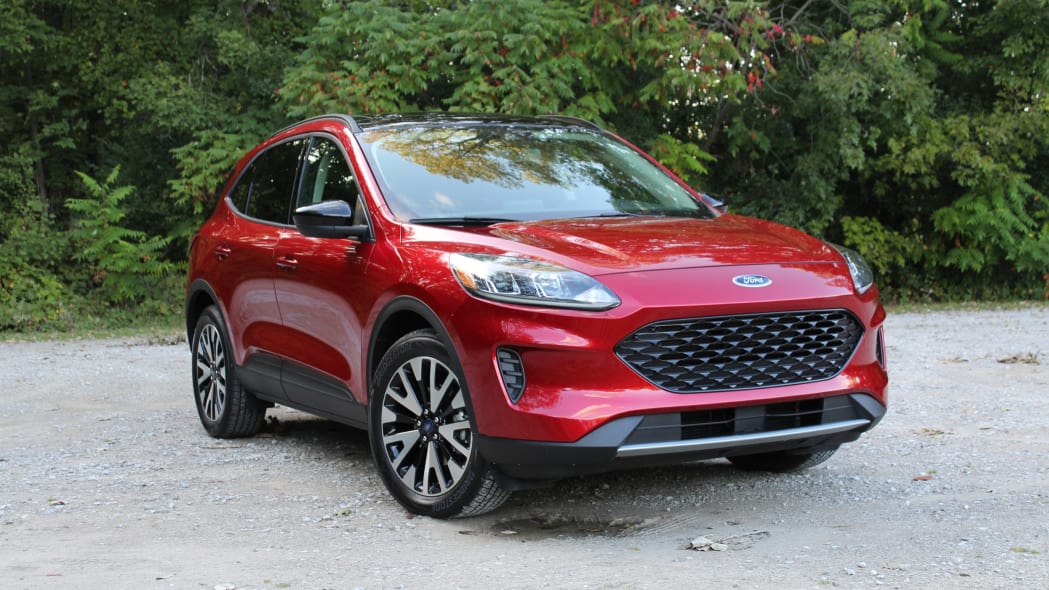
We compare the ford Escape’s specs to those of the Chevrolet Equinox, Honda CR-V, Nissan Rogue, Subaru Forester and Toyota RAV4.
What features are available and what’s the Escape’s price?
The 2020 Escape will be offered in S, SE, SE Sport, SEL and Titanium trim levels. A base Escape S costs $26,050. AWD is an additional $1,500 on all trims. That S nets you a few notable standard features, including Ford Co-Pilot360 suite of blind-spot detection, lane-keep assist, auto high-beams and automatic emergency braking. Then, there are two USB charging ports and a WiFi hotspot good for up to 10 devices.
The 1.5-liter three-cylinder will be standard on S, SE and SEL models, while the Hybrid drive system will be standard on SE Sport and Titanium models. The 2.0-liter four-cylinder turbo is available in the SEL and the Titanium.For information on other trim levels, you can check out the breakdown of their features, specs and local pricing here at Autoblog. All prices below include the destination charge.
- S FWD: $26,050
- S AWD: $27,553
- SE FWD: $28,290
- SE AWD: $29,790
- SE Sport Hybrid FWD: $29,450
- SE Sport Hybrid AWD: $30,950
- SEL FWD: $30,420
- SEL AWD: $31,950
- Titanium Hybrid FWD: $34,595
- Titanium Hybrid AWD: $36,095
- Titanium 2.0L Turbo AWD: $37,480
What are Escape’s safety equipment and crash ratings?
Every Escape will come standard with Ford Co-Pilot 360, which includes blind-spot warning and rear cross traffic warning, lane-keeping assist and automatic emergency braking with pedestrian detection. Adaptive cruise control and lane centering are optional.
The 2020 Escape has not been crash tested by a third party at the time of this writing.
from Autoblog https://ift.tt/2BDNG1z

